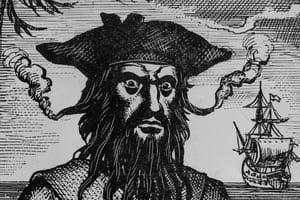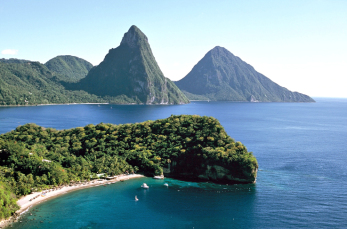Did you know that tiny, immortal jellyfish live in the Caribbean? Or that Nassau, capital of the Bahamas, was long ago a pirate republic? Surely you must have heard that camels were once imported to Jamaica and Barbados from the Middle East?
Over the past few months I have been tasked with writing a book of one hundred little-known facts about the Caribbean. I have delved into local folklore, explored underwater geography, researched romantic pirate legends, and traced the footsteps of empires. Before long it became apparent that I was discovering a Caribbean much more exciting and diverse than mere white sand beaches.
The historical character of these islands  has been particularly striking. The Caribbean is often consigned to the remotest corners of our understanding of European imperialism, but it has been fascinating to follow the lives of famous figures as they weave through, and thread into, the Caribbean. Far from incidental to global matters, the Caribbean has been an active participant: during the rivalry between the Spanish and English in the seventeenth century, to the despicable slave trade of the eighteenth century, and even the global wars of the nineteenth and twentieth centuries, the Caribbean has played an important role.
has been particularly striking. The Caribbean is often consigned to the remotest corners of our understanding of European imperialism, but it has been fascinating to follow the lives of famous figures as they weave through, and thread into, the Caribbean. Far from incidental to global matters, the Caribbean has been an active participant: during the rivalry between the Spanish and English in the seventeenth century, to the despicable slave trade of the eighteenth century, and even the global wars of the nineteenth and twentieth centuries, the Caribbean has played an important role.
It has also long been incorporated into a wider relationship with the Atlantic world. From the diffusion of hammocks and rum, to the famous Pirates of the Caribbean movie franchise, these islands have exported and informed cultural trends. In turn, the Caribbean has also received the influences of the wider world: the despicable slave trade transposed African folklore to the New World, Haitian revolutionaries adopted to European-styled heraldry, and American pop culture continues to inform and be informed by Caribbean cultures.
 This project has also demonstrated the exciting variety of ecological and environmental variety of the West Indies. From miniscule frogs hiding in Dominican forests, to gaping oceanic trenches that plunge to the lowest depths in the Altantic, it is impossible to overstate the dramatic and diverse character of the Caribbean. Even ancient fossils reveal gigantic creatures and the remains of prehistoric animals that we could barely imagine today. It is an environment that deserves to be cherished and protected for the coming generations.
This project has also demonstrated the exciting variety of ecological and environmental variety of the West Indies. From miniscule frogs hiding in Dominican forests, to gaping oceanic trenches that plunge to the lowest depths in the Altantic, it is impossible to overstate the dramatic and diverse character of the Caribbean. Even ancient fossils reveal gigantic creatures and the remains of prehistoric animals that we could barely imagine today. It is an environment that deserves to be cherished and protected for the coming generations.
I have been surprised, delighted, and inspired by discovering these hitherto unknown facts about the Caribbean. The narratives of the region weave seamlessly into global history, and yet the islands retain individuality and a distinct charm. As I draw this project to a close I feel a much deeper sense of appreciation for the Caribbean and am hopeful that there is a bright future for the region.
Author: Alex Marshall
25th June 2014
